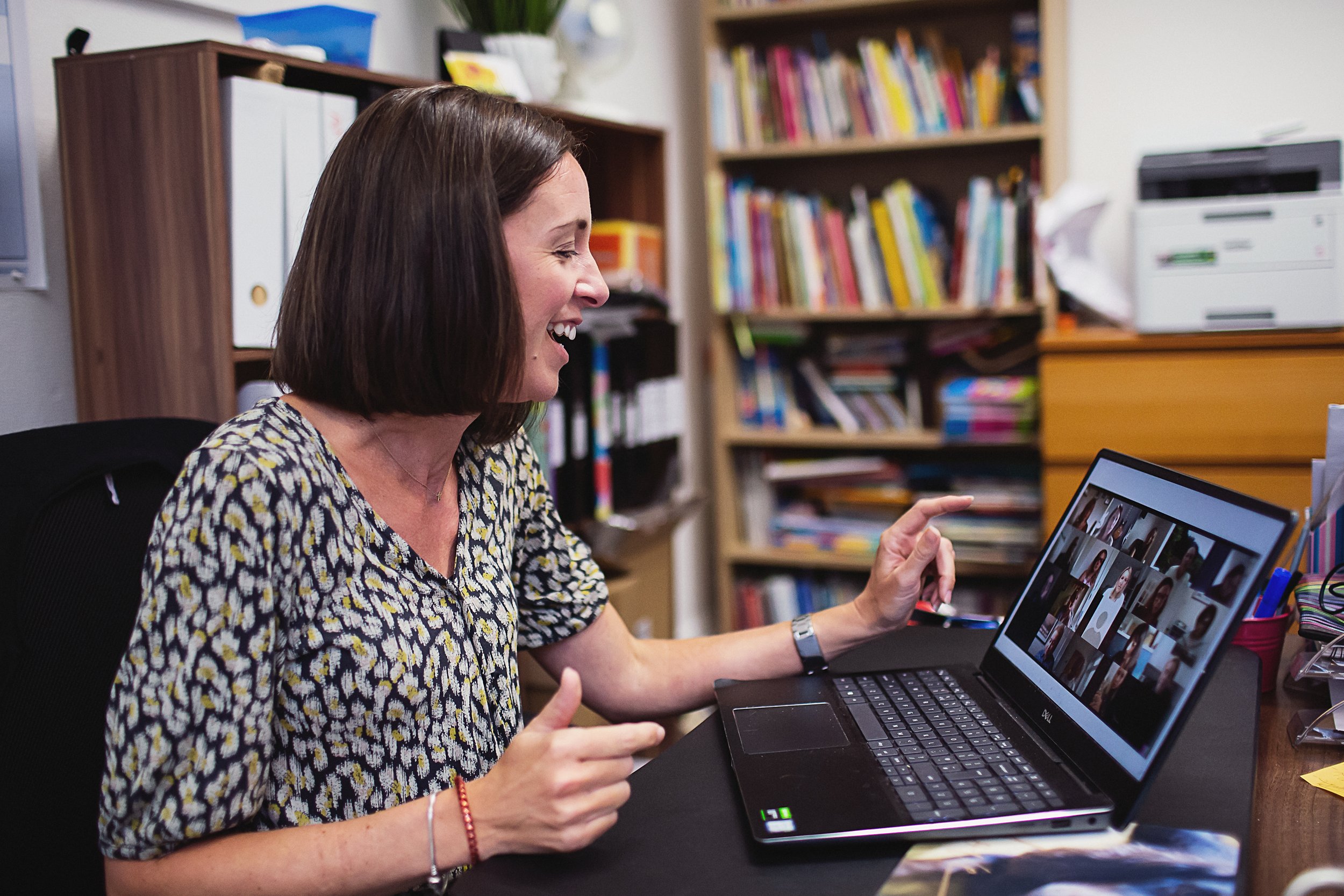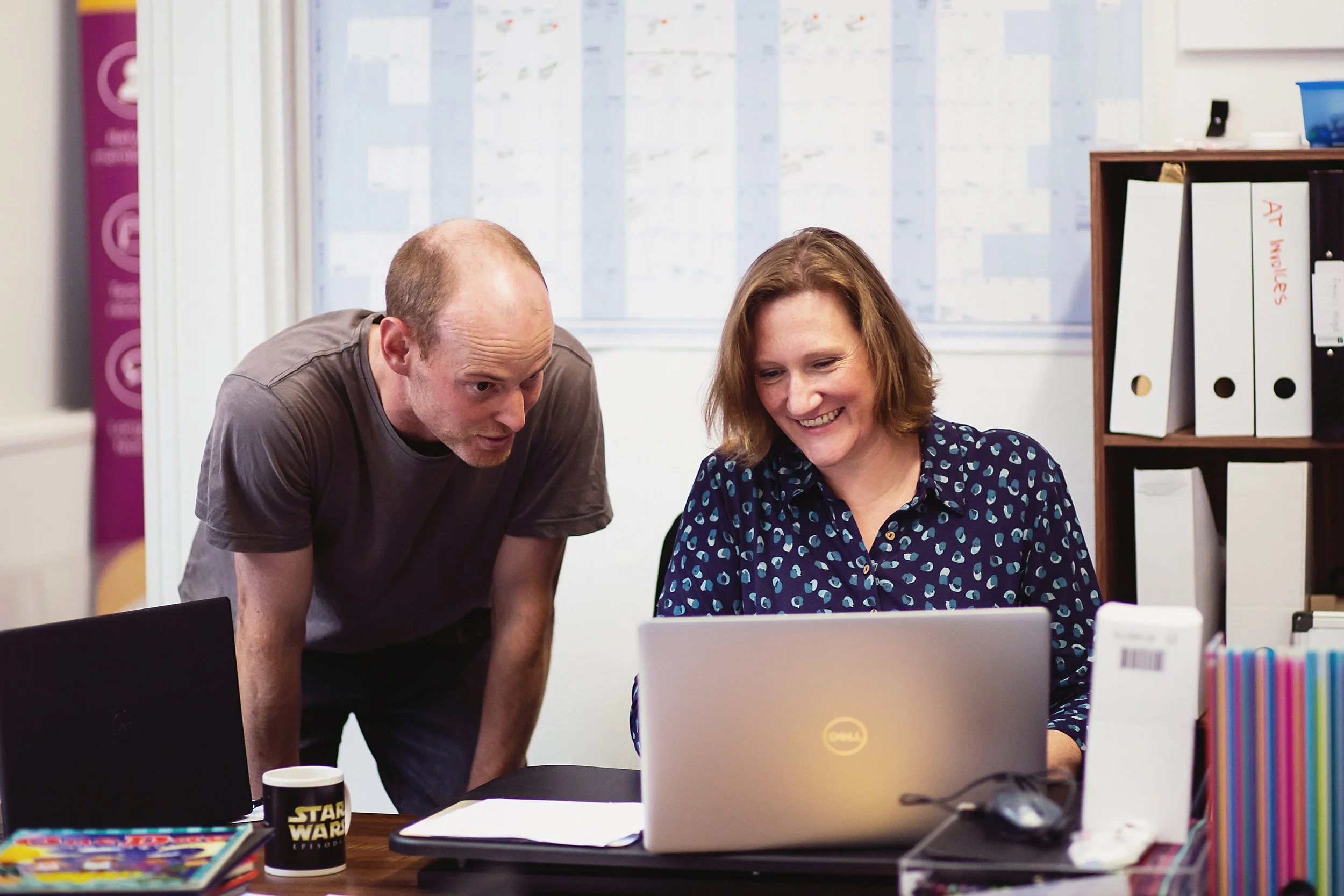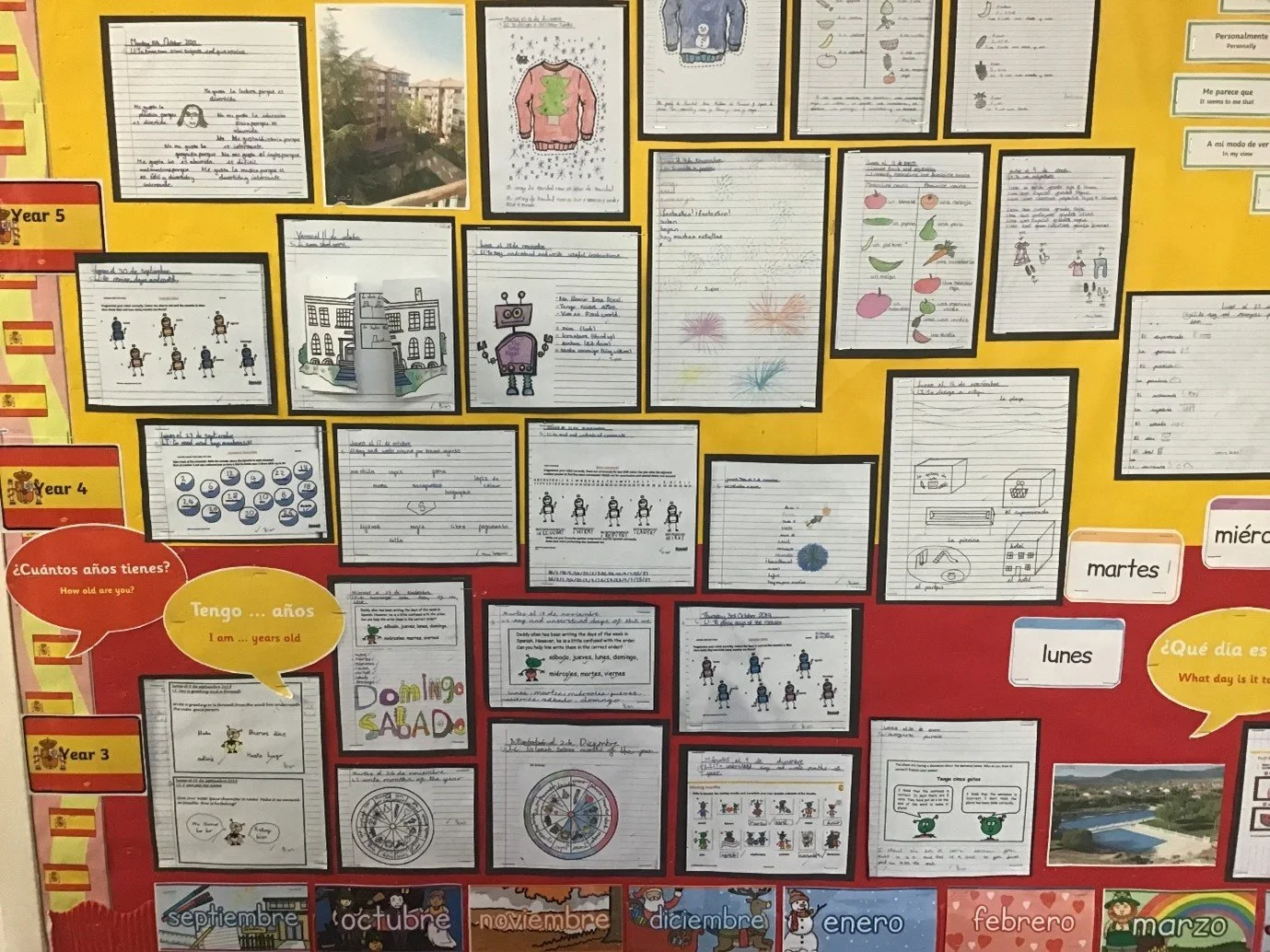Kate hosts a Languages leadership twilight every half term to PLN members
At our most recent Leadership twilight, we looked at the most effective ways to introduce and embed dictionary skills. As Attainment Target 9 says, pupils should be using dictionaries to ‘broaden their vocabulary and deepen their ability to understand new words’. So, if the attainment targets say it, we must do it, right? But who uses an actual dictionary anymore? Don’t we all just google?! I’m being facetious of course (hmm facetious/fasecious…just let me google how to spell that).
OK, so it turns out an online dictionary tool is much faster and let’s face it, saving time in lessons is all good. I would recommend www.wordreference.com as a quick look up tool for the primary languages classroom. People also recommend www.reverso.net to me. What these two sites do is present words as though they were in a physical dictionary: word class is denoted (noun, adjective, verb); the gender of the noun is clarified (masculine, feminine, neuter); examples of the word in context are given; other words in the same word family and synonyms. I would probably advise against relying on Google Translate – it can be fine for the odd word but when phrases and sentences and punched in, all manner of inaccurate translations are offered which take a much higher linguistic knowledge to spot. (We’ve all seen the Google Translate parodies on You Tube, haven’t we?)
So whether online or physical, most of us would agree that being able to use a dictionary effectively is a skill we want our pupils to master, expanding vocabulary and promoting curiosity about language, and there are several tried and tested ways below to do this:
Allow time to explore
When first introducing a dictionary, allow time for children to explore it. This might be in Stage 2 (second year of language learning) or maybe even at the end of Stage 1 (although glossaries and word banks may be more appropriate here…more on these later) Ask children what they notice after five to ten minutes exploration. Firstly, it is two books in one! Janet Lloyd saw a great trick in a school once where the teacher marked the middle of a bilingual dictionary with a post-it note. Children then worked out if they had a Spanish word and they needed to find the English, they had to look in the first section and vice versa for the second. So maybe establish this post-it rule. Bilingual dictionaries have an intriguing middle section with loads of word lists on many different topics and some fascinating cultural info too. Pupils may spot the abbreviations like m/f/ adj/v What could these mean? If children are familiar with an English dictionary, they may recognise these as the ‘word class’ but the concept of noun gender (masculine or feminine, plus neuter in German) may be new to them.
2. Model how to use a dictionary
It is probable that children do not see parents and carers using a physical dictionary at home today and we cannot expect them to know how to do it straight away. Lauren Boon (PLN network member and coordinator) uses her class visualizer or webcam to show and talk through the process of looking up a word. Consider the fact that some children may not have alphabetical order embedded yet so they will need practice in selecting the correct half of the dictionary, scanning through the alphabetised pages, skimming down the pages to find the word they need.
3. Use to teach new vocabulary
Language detectives!
Lauren also cleverly uses dictionaries to teach a new set of vocab! At the start of a topic, she will present the new vocabulary in a word bank or knowledge organiser without the English translation for the children themselves to look up. This means one lesson less to teach by combining dictionary skills with exploring new words.
4. A last resort
Children need to know that using a dictionary is a last resort in the list of ‘language detective skills’. There are several other strategies before picking up a dictionary such as thinking what you know already, using knowledge of cognates/semi-cognates and using the context to make educated guesses. Children should be instructed that they don’t need to know every word in a sentence or extended text to understand its meaning. They need to know not to look up tiny words like un/une (a) as they won’t add to meaning. There is also a real skill in knowing if the word you found is the word you need. For example, if looking up the word bat, be careful you select the right kind of bat (the animal or the thing used to hit the ball in cricket) The word sweet could be a noun or an adjective. Both will be in the dictionary but pupils will need to be selective. They will also meet false friends (words which disguise as cognates but have other meanings). So having that critical eye when looking at a foreign word’s context and knowing when to look up a word to be doubly sure is important.
5. Glossaries and word banks
As mentioned before, differentiated glossaries/word banks or knowledge organisers may be less time-consuming and overwhelming as an effective research tool for Lower Key Stage 2. You can make these yourself, presenting a list of the key vocabulary needed for the task or topic in alphabetical order and choosing whether to add the abbreviations such as v, adj, m/f depending on the age and stage of the class.
6. Practise the skill of using a dictionary
Every so often, dedicate part of a lesson to practising dictionary skills such as skimming and scanning, being selective with word choice, looking up a list of words which all start with the same letter. Speed challenges in mixed-ability pairs or teams go down very well! As it is a skill in itself, I personally allow dictionaries to be used in assessments. You’ll find most of the PLN Puzzle It Out assessments say to use a bilingual dictionary in one of the tasks to assess this skill.
7. Reinforce GAPs
As a year 6 class teacher, I am really keen to make reference to grammatical terms in MFL lessons (noun, adjective, verb, etc) as they reinforce all the work done in English grammar lessons. Even the term ‘term’ can sometimes be confusing for children so to hear it referred to often, helps make those links.
8. Dictionary detectives
I Spy Nouns and dictionary detective activities make dictionary work fun. I Spy Nouns works well in pairs (You can find the picture sheets online). Partner A looks up one of the words pictured and writes the translation in the target language on a whiteboard. Partner B looks up this word reading from A’s board and writes it in English. Both colour the picture and choose another to look up. Points can be scored for how many words have been looked up by the end of an allotted time. Extend this challenge by looking up an adjective or verb associated with one of the pictures or by providing a sheet with images all starting with the same letter (spider, snake, snail…).
9. Inclusion
Lauren Boon also says that the act of looking in a dictionary can work as a self-regulating activity for children she teaches who have ASD and other learning needs. If a child is struggling to engage in the class activity, offer a bilingual dictionary as way of focusing their attention on an individual task or even just a browse through the words and pictures – they are still engaging with language. For more able and native speaker children, a bilingual dictionary should always be on hand in order to challenge them to broaden their word choice beyond the key vocabulary taught in the session.
10. Creative writing
I just love the potential of primary languages in PLN’s ‘Rainbow of Love’ or the Mother’s Day poem where children can make use of dictionaries to look up unfamiliar words to add to their writing. Both of these lessons allow children to use a repeated set of phrases (I see… and You are like….) but to change the way they end e.g. I see hope, I see courage and You are like the golden sun, you are like the flowers. The result is children writing figuratively in the target language! Another simple yet effective idea is to write a series of antonyms with the greetings Bonjour___Au revoir ___ looking up two words with opposite meanings to fill the gaps.
11. Beat the teacher!
Lastly, never underestimate the power of a child finding out something that you, as the teacher, did not know. Steve Eardley allows his classes to look up additional vocab based on their current topics which they think he will not know. And a spontaneous idea by a pupil at tidy-up time in my class prompted children to challenge me to translate the words they found. They were equally impressed with the words I did know as they were humbled by how many they were teaching me!
To book one of our trainers for a twilight or full day session for your school or Trust, get in touch with sylvia@primarylanguages.network
Kate Percival runs MFL consultancy sessions for co-ordinators which can run virtually and can cover areas such as: starting out with primary languages in your school, putting together coordinator documentation, preparing for an MFL deep dive, and looking for the next challenge. You will be given a full report of the discussion which includes working points and this can be shared with your Headteacher. Also included is a shorter catch-up session at an agreed future date where we can celebrate progress made and support with anything further.
If you would like to book Kate for a consultancy session, contact sylvia@primarylanguages.network
For more info and booking click on the link below










































































